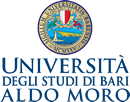SCALENET: A SEARCHABLE INFORMATION SYSTEM ON SCALE INSECTS
DOI:
https://doi.org/10.15162/0425-1016/808Abstract
SCALENET: A SEARCHABLE INFORMATION SYSTEM ON SCALE INSECTS.
Systematic information on the scale insects of the world is currently being compiled and synthesized in a database system called BASIS. The information is organized by scale insect family and is searchable at a site on the World Wide Web called ScaleNet (http:\\www.sel.barc.usda.gov\scalenet\scalenet.htm). The site provides general information on scale insects, including sections on economic importance, life histories, distribution and ecology, classification and biographies. A query system provides information on valid names and provides a complete systematic catalogue for any valid genus or species. For a particular taxon, queries will give the following information: all hosts of a scale, distribution of a scale, references for a scale, a checklist of all valid species in a family or genus, biological notes and remarks for a scale. It also will give the scales that occur on a particular host, all systematic references on scales that were published between two dates, all references published by an author, all references with any of five selected words in a title or annotations, a list of all scales described by a particular author, all scales from a particular zoogeographic region, country or country subunit, and the scientific name of any common name of a scale.
Key words: BASIS, Biological and systematic information service, Coccoidea, Coccinea, Aclerdidae, Asterolecaniidae, Beesoniidae, Cerococcidae, Coccidae, Conchaspididae, Dactylopiidae, Diaspididae, Eriococcidae, Halimococcidae, Kermesidae, Lecanodiaspididae, Margarodidae, Micrococcidae, Ortheziidae, Phoenicococcidae, Phenacoleachidae, Pseudococcidae, Tachardiidae.







